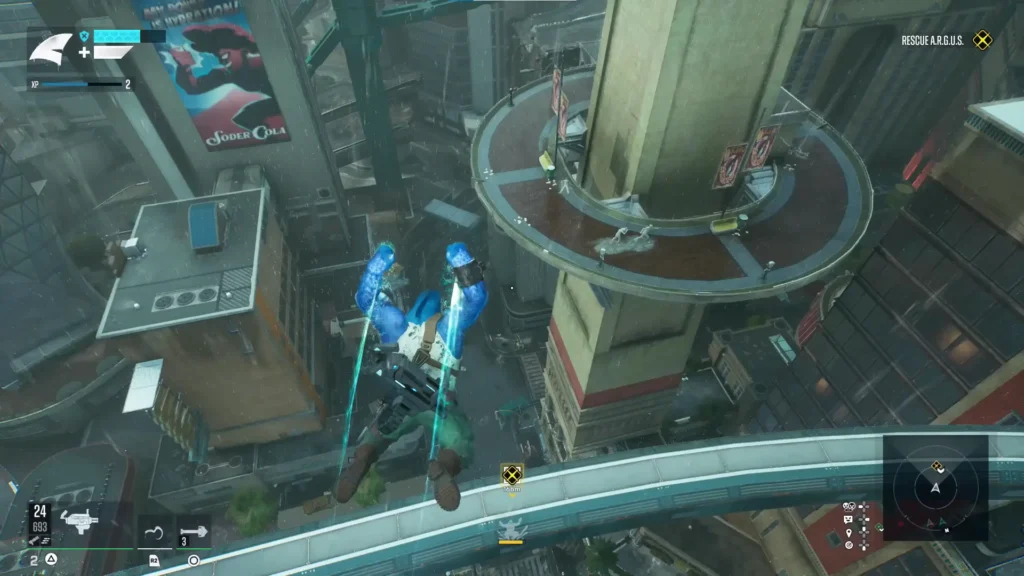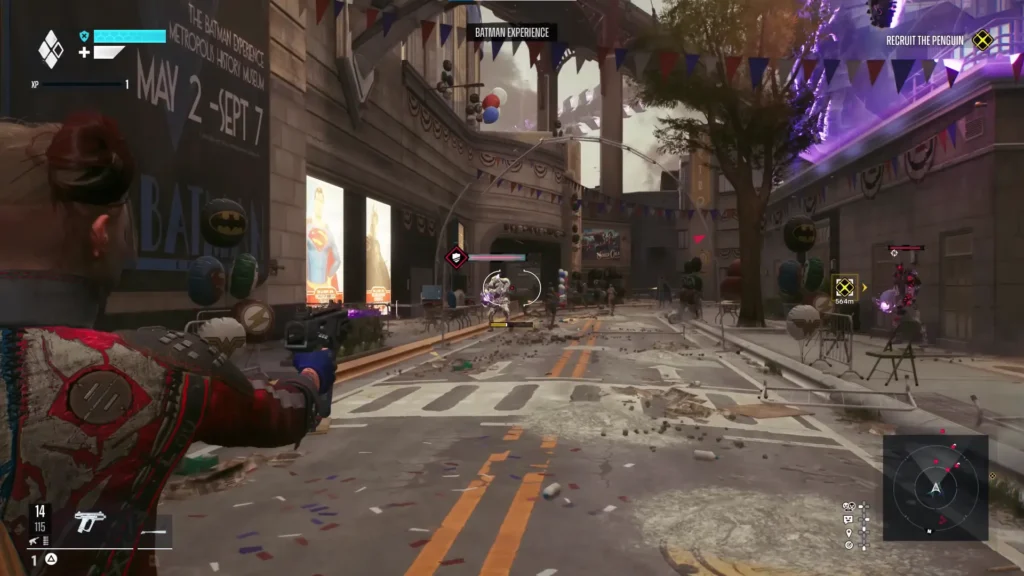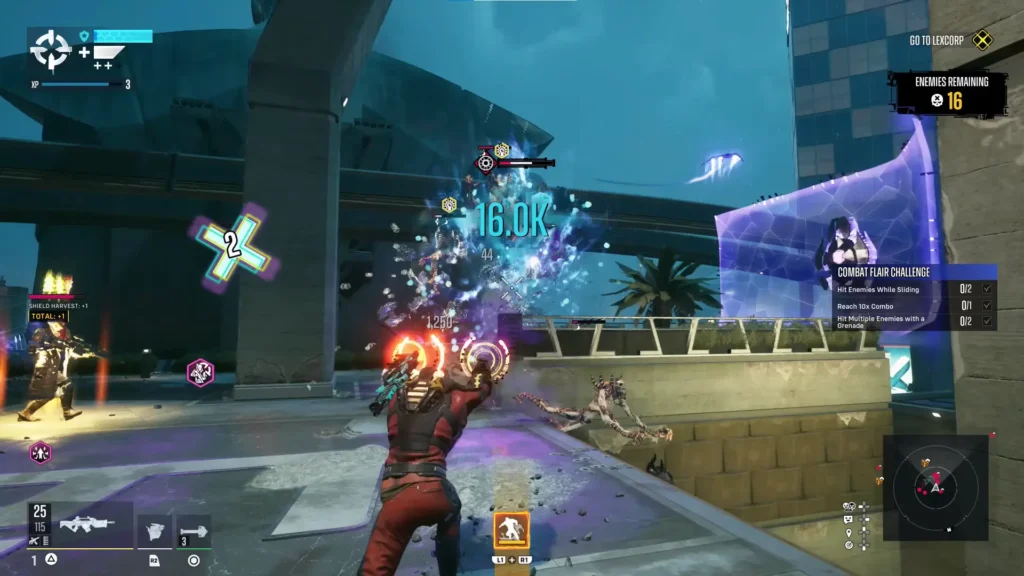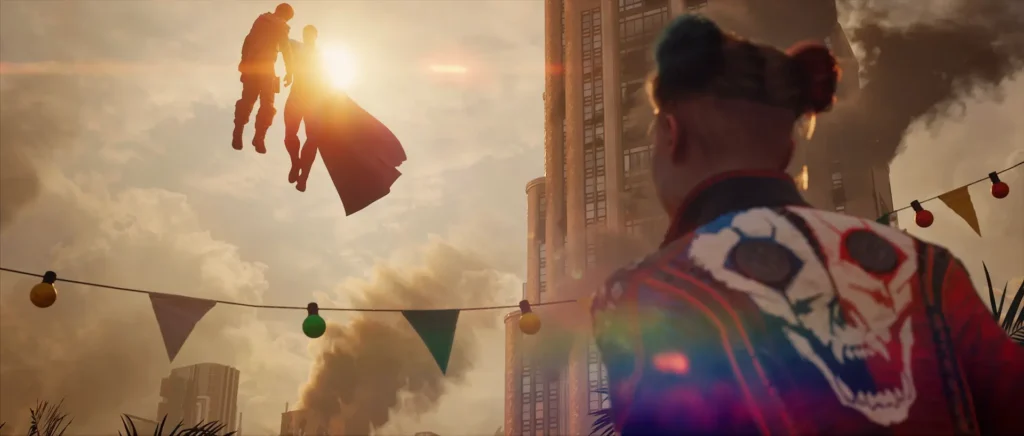Release Date : February 2, 2024
Developer(s) : Rocksteady Studios
Publisher(s) : Warner Bros. Games
Platforms : PS5, Xbox Series X/S, PC
Rocksteady Studios redefined the Action-Adventure genre and revolutionized superhero adaptation in video games with its Arkham saga. Against all expectations, Batman retired in June 2015 after Arkham Knight. 8 years later, not only the Dark Knight, but also the Justice League are back in action in a brand new role… deluxe antagonist.
Will the looter shooter Suicide Squad: Kill the Justice League be able to continue the fight started by Bruce Wayne and the Bat Family in the late 2000s? Well, we can’t say for sure.
Arkhamverse Ending

Before judging Rocksteady Studios’ latest heroic adventure, it’s essential to put Suicide Squad: Kill the Justice League in its proper context. This Action-RPG is a direct sequel to Batman: Arkham Knight, and is fully integrated into the Arkhamverse, whether fans of this videogame saga like it or not. The events of Task Force X, led by Amanda Waller, conclude in 2024, with DC’s most vicious anti-heroes, a series that began almost fifteen years ago.
The story begins with the invasion of Earth by the armed forces of a new supervillain named Brainiac, and the brainwashing of several Justice League members. But as soon as the adventure begins, the first major flaw appears. This alien intrusion and the downfall of the DC universe’s most powerful superheroes is never shown. And the disappointment caused by this narrative choice is equal to the expectations set for a confrontation that promised to be epic, if nothing else.
In response to the might of Brainiac and his meta-humans (Superman, Batman, Green Lantern, etc.), the United States, represented by Amanda Waller, turns to a different kind of hero… super-villains. Now members of the Suicide Squad, their existence is simply a matter of succeeding in their missions or die trying. To ensure their total obedience, the head of the secret paramilitary government agency “ARGUS” has even implanted them with nano-bombs. Desperate times call for desperate measures.
4 Knights of the Apocalypse

Kill the Justice League excels mainly in its direction, which tends to defuse the epicism required by such a premise with a clever sense of humor that usually works. Fans of James Gunn’s The Suicide Squad (2021) will be delighted to rediscover the special tone of modern Task Force X, shifting between heroism and outrageous nonsense. Plus, Warner Bros. Games has clearly gone to great lengths to offer its Suicide Squad an adventure worthy of their sacrifice.
This Suicide Squad game rarely skimps on resources – especially visual ones – to showcase the war-like antics of a four-man army eager to resolve even the most peaceful situations with smoking guns. The cutscenes do justice to Task Force X and their mission, which on paper seems impossible: to eliminate the members of the Justice League. What’s more, Rocksteady Studios draws on the comic books to flesh out this war between David and Goliath, respecting the source material for the most part, even if certain twists are made for the sake of the story.
The main storytelling flaw in Suicide Squad: Kill the Justice League lies in its prologue. The first episode takes the form of a clumsy, uninspired flashforward that serves no other purpose than to test the four anti-heroes before the real adventure begins… 7 days earlier. We’ve seen more epic ways to dig up the hatchet. However, Rocksteady’s title offers DC fans a number of special guests to enhance an adventure that involves many cult characters, including The Penguin aka Oswald Copplebot, Lex Luthor, Lois Lane, and the Mystery Man. Their role in the story ranges from cameo to plot twists. The pleasure of discovery is yours.
A Squad in Town

The area of operations has changed. The mean, dark and sweaty streets of Gotham City have been replaced by the majestic and shining city of Metropolis. Once the stronghold of Superman and the Justice League, the city is now deserted, but not yet in ruins. Apart from Brainiac’s troops and members of the ARGUS, there’s hardly a soul left on the streets and alleyways of the city. Although this absence is justified by the scenario, it transforms the open world imagined by Rocksteady’s artists into a simple arena.
The only reason this huge arena exists is to serve as a link between the missions, both main and secondary, and to enjoy a well-crafted movement system. Crossing Metropolis by jetpack or grappling hook is a real pleasure, even if it does become repetitive over time. The city also benefits from dynamic weather and a day/night cycle (a classic open-world feature), which doesn’t change the way Amanda Waller completes her objectives, but it does lend credibility to the game’s universe.

Metropolis is also a visual gem, powered by the famous Unreal Engine 4. Superman’s city extends in all its splendor over a vast territory both on the ground and in the skies, adding verticality to a shooter-centric gameplay. Unfortunately, Amanda Waller barely renews her mission orders, which boil down to defend, survive, eliminate and escort. Although these broad principles are altered by various success conditions, this can’t help the feeling of constantly doing the same thing over and over again. The challenges and collectibles scattered around the map by the Mystery Man, and the rare vehicle sequences, won’t change that either.
In the Line of Fire

The term “shooter” perfectly sums up the videogame experience imagined by Rocksteady, which doesn’t lie about the product. Suicide Squad: Kill the Justice is faithful to its genre and applies its fundamentals (a little too strictly), which consist of killing thousands of enemies and obtaining ever more powerful equipment.
To succeed in this type of video game, you need a gameplay that provides good, if not excellent, shooting sensations. Fortunately, Task Force X knows how to put their talents to good use. It’s a real pleasure to shoot at anything that moves, and to glide several meters above the ground, all the better to launch an attack on Brainiac’s forces.
However, the bestiary suffers from a lack of renewal. Our four anti-heroes face the same enemies over and over again, whose main threat lies in their sheer numbers rather than in their AI, which could be upgraded, to say the least. Even the boss battles only manage to keep things interesting for a while, and they end up being too conventional and unmemorable.
A special mention must go to the one against Batman, which is the most disappointing of them all! However, the different gameplays of Deadshot, Harley Quinn, King Shark, and Captain Boomerang bring a breath of fresh air to an essentially repetitive adventure.

The four anti-heroes are very different, both in their personalities and in the way they’re experienced in the game. They are true character classes, with their own talent trees and specific equipment. The growth of the Suicide Squad is one of the great qualities of Kill the Justice League, which regularly gives players new skills, weapons and upgrades. Rocksteady Studios didn’t reinvent RPG mechanics, but did apply them carefully. The feeling of controlling the destiny of Task Force X is real and exhilarating.
Finally, Suicide Squad means that cooperation is a core part of the experience imagined by the British studio, who wanted to create a multiplayer video game after the three Arkham single-player adventures. Of course, Kill the Justice League can be completed alone, with AIs as companions, but it wasn’t designed to be experienced that way. It’s with 4 “humans” that the adventure makes sense and reveals its full potential, although this doesn’t erase the flaws mentioned above.
The synergies created on the fly between squad members and the simple pleasure of fighting Superman with friends are the main sources of inspiration for this looter shooter. What’s more, netcode and matchmaking encourage you to parachute into Metropolis with friends. So why not?
The End… or Is It ?

Killing the Justice League is just the beginning, if not a pretext for learning the game’s mechanics the hard way, before taking on Brainiac. As a looter shooter that respects the genre, Rocksteady Studios’ title boasts a solid endgame that can easily be summed up as chaining missions together to obtain rewards and XP to launch into even more difficult missions… etc. Then, unsurprisingly, the multiverse comes into play, offering a multitude of Earth planets, and of course, new characters or alternative versions of those you’ve already met.
Solid on paper, with its infinite number of missions and increasingly attractive loot, this end of the adventure is just as redundant, if not more so, than tracking down the members of the Justice League. It’s satisfying to become more powerful and crush Brainiac’s forces in a fraction of a second, but to what end… except the eternal, never-ending quest for power.
The shortcomings of Suicide Squad: Kill the Justice League become even more apparent, while the feeling of being trapped in an endless gameplay loop is made even worse as new difficulty levels are unlocked. And you can’t miss the store, which sells only cosmetic items. There’s nothing “pay to win” here, but the stubborn disappointment of not being able to obtain the desired outfits by just playing the game remains.
Conclusion
Rocksteady Studios promised to kill DC’s greatest heroes, and they’ve done it… in every sense of the word. Suicide Squad: Kill the Justice League is a successful looter shooter, but above all a generic one that struggles to renew the gameplay experience throughout the adventure. However, this open-world Action-RPG proves its worth in terms of direction, visuals and, above all, writing, with a tone that is both superheroic and funny. The “role-playing” dimension, central to this type of videogame proposition, is not overlooked, and seduces with a constant rise in the power of Task Force X, which deploys all its expertise to match the Justice League. Unfortunately, the British studios didn’t manage to measure up to the masters of the genre (Borderlands 3, Destiny 2, and even Outriders). Rocksteady’s suicide mission is neither a failure nor a true success.
